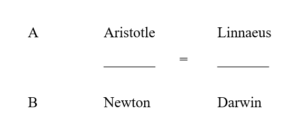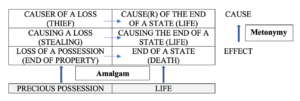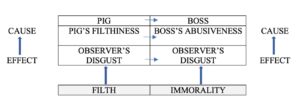Aleksi Mäkilähde, University of Helsinki
Tapani Möttönen, University of Helsinki
Our theme session focuses on the philosophy and methodology of linguistics, taking as its inspiration and point of departure the recent collected volume Normativity in Language and Linguistics (Mäkilähde, Leppänen & Itkonen (eds.) 2019). The chapters in the volume set out to further our understanding of the nature of both language and linguistics, arguing in favour of what might be called the ‘conventionalist’ position in the philosophy of linguistics, namely that although language is a multifaceted phenomenon, having for example mental and physical aspects, its defining character is its social aspect. In other words, language is seen above all as a social institution, something shared by its speakers, intersubjective, and so forth. More specifically, the chapters focused on the role of norms and normativity in language and linguistics, covering both general ontological and epistemological issues – what kind of entities norms of language are and how they are known – as well as issues pertaining to specific sub-fields of linguistics or particular linguistic phenomena.
The papers in this theme session advance the discussion further by developing the themes covered in the chapters of the volume. Each talk is connected to one of the chapters, presenting an updated version of an earlier argument, focusing on and further developing one particular aspect of the earlier discussion, or overlapping in some other way with the earlier work. The individual papers cover issues relating to both the nature of norms themselves as well as the methodological implications of the normative nature of language, including for example the relationship between normativity and creativity, the relationship between normativity and vague language, and the methodological roles of intuition and observation. Our aim is to provide insights into the placement of language within the domains of culture, cognition and the physical world, thus furthering our understanding of what kind of an entity language is as well as what kind of a science linguistics is. Regardless of one’s disciplinary background or interest in the philosophy of linguistics, these are fundamental questions central to the work of every linguist.
References
Mäkilähde, Aleksi, Leppänen, Ville & Itkonen, Esa (eds.). 2019. Normativity in Language and Linguistics. Amsterdam/Philadelphia: John Benjamins.
Norms and normativity: A brief introduction
Aleksi Mäkilähde, University of Helsinki
Esa Itkonen
The aim of our paper is to set the stage for the whole theme session by introducing the concepts of norm and normativity and discussing the roles they play in language and in linguistics (see Mäkilähde, Leppänen & Itkonen 2019). We begin with a characterisation of norms in general, followed by a discussion of various types of norms (cf. e.g. von Wright 1963; Brennan et al. 2013). We focus on two dimensions of normativity which are particularly relevant for linguistics, correctness and rationality, together with their corresponding norm types, norms of correctness and norms of rationality (or ‘rules’ and ‘rationality principles’). Norms such as these are not mental or physical but social entities (although their internalizations by language users are mental entities), and the language users’ knowledge of their content is ultimately based on intuition (and not on sense-perception). These basic facts have considerable methodological implications, which are discussed in detail in our paper. The two types of norms mentioned above play distinct roles in the various fields of linguistics (Itkonen 1978; 1983); these are illustrated at the end of our talk through an overview of the chapters in the volume Normativity in Language and Linguistics, thus providing additional background for the rest of the papers in the theme session.
References
Brennan, Geoffrey, Eriksson, Lina, Goodin, Robert E. & Southwood, Nicholas. 2013. Explaining Norms. Oxford: Oxford University Press.
Itkonen, Esa. 1978. Grammatical Theory and Metascience: A Critical Investigation into the Methodological and Philosophical Foundations of ‘Autonomous’ Linguistics. Amsterdam: John Benjamins.
Itkonen, Esa. 1983. Causality in Linguistic Theory: A Critical Investigation into the Philosophical and Methodological Foundations of ‘Non-autonomous’ Linguistics. London: Croom Helm.
Mäkilähde, Aleksi, Leppänen, Ville & Itkonen, Esa. 2019. Norms and normativity in language and linguistics: Basic concepts and contextualisation. In Aleksi Mäkilähde, Ville Leppänen & Esa Itkonen (eds.), Normativity in Language and Linguistics, 1–28. Amsterdam/Philadelphia: John Benjamins.
von Wright, Georg Henrik. 1963. Norm and Action: A Logical Enquiry. London: Routledge & Kegan Paul.
Language norms we live by
Jordan Zlatev, University of Lund
Johan Blomberg, University of Lund
Language norms are a particular kind of social norms, namely those that regulate human verbal communication. From a phenomenological perspective (Zlatev & Blomberg, 2019), language norms can be said to constitute an indispensable domain of the pan-human life world (i.e., everything that human beings experience), and as such a central object of study for general linguistics. Since languages and cultures obviously differ, language norms are also central for specific human home worlds, and thus key for the study of individual languages, as well as for anthropological and ethnographic studies of their respective cultures (e.g. Everett 2005).
Still, the phenomenon of language norms remains controversial, ranging from views that equate languages with their corresponding norms (Itkonen, 2008) to those that deny them completely, or recognize them only as more or less artificial “prescriptions” attempting to contain the fluidity of spontaneous languaging, or at most as second-order constructs made up by linguists (Cowley, 2009). We propose that this huge variety of views is due to (a) confusions about what the term “language norms” refers to and (b) the inherent difficulty of spelling out the nature of language norms in explicit, propositional terms (i.e. those of a natural or artificial language).
Starting from the latter, like much in human (bodily) experience, language norms cannot be fully represented by propositional structures, since they are lived or inhabited, rather than known in the manner of perceptual or abstract objects. In other words, the type of intentionality through which they are made manifest is operative, rather than perceptual, reflective, or some even higher, semiotically mediated form of intentionality (Merleau-Ponty 1962; Zlatev, 2018). In this respect (though not in others) language norms are like bodily habits, with their visceral normativity (e.g., how “right” it feels to sit or move in one way, as opposed to another). This implies that language norms cannot be known through intuition, which (on any definition) requires a clear, transparent relation between the mind and its object (Sokolowski 2000). What the most basic kind of language intuitions, the categorial kind, do have access to are the breaches of norms, as abundantly illustrated by all “ungrammatical”, “inappropriate” or “unacceptable” utterances that are used in the literature in order to individuate one type of language norm or another: phonological, semantic, grammatical, pragmatic, sociolinguistic etc.
We illustrate with examples and conclude optimistically that if our argument is to be accepted, then language norms would become a less mysterious and less controversial phenomenon and object of study for linguistics.
Good vagueness, bad vagueness: Linguistic normativity meets talk-in-interaction
Tapani Möttönen, University of Helsinki
Jordan Zlatev, University of Lund
As established by proponents of linguistic normativity (Coseriu 1985; Itkonen 1978), language norms are not restricted to those of well-formedness but also to language use, including both expression and meaning, thus interpenetrating practically all aspects of language. For example, Coseriu describes how language use (i.e. energeia) gives rise to, and builds on, norms on three different levels: universal (common to all languages), historical (specific to a particular language), and individual or situated (specific to certain situations, genres or contexts). Building on this, but taking a more phenomenological perspective on normativity, the Motivation & Sedimentation Model (MSM, Zlatev & Blomberg 2019; Devylder & Zlatev 2020) explains how the norms that pertain to these different levels stem from different facets of human pre-verbal experience and language use. Through the process of sedimentation norms are established as resources that in turn motivate future instances of use. MSM consequently predicts that linguistic norms exhibit substantial amount of dynamism and variation, being overridable by the inherent creativity of actual language use.
In this talk, we apply MSM to an aspect of language use where dynamism and variation are particularly present: vague language. This notion covers types of linguistic expressions which imply that there is more meaning intended than what explicitly mentioned (e.g. extenders such as and so forth). As a prominent feature of talk-in-interaction, vague language also covers general non-precision, e.g. lexical choice, ellipsis and elliptical combination of constructions, which emphasize the interlocutors’ ability to rely on the context and non-linguistic communication. By analysing examples from Finnish institutional talk-in-interaction, we show that vague language in this sense involves normativity on the situated level of communication. On the one hand, vague language may allow the establishment of sufficiently shared meanings in the interaction (cf. Linell & Lindström 2016). Due to the fact that language norms never determine but only constrain and motivate language use, interlocutors may interpret expressions in principle in multiple ways as long as the interpretations result in efforts that are constructive for the overall task at hand. Hence, this is a case of “good vagueness”. On the other hand, the interlocutors may entertain or develop, through the ongoing discussion, insufficiently shared meanings, which in turn may result in misunderstandings or overt disagreements of how certain expressions should be used: e.g. “military operation” vs. “war” or even “massacre”. This is a case of “bad vagueness”. We illustrate examples of each from a corpus of video recorded planning meetings by a service design team in a multinational consulting company.
References
Coseriu, Eugenio. 1985. Linguistic competence: What is it really? The Modern Language Review 80(4): xxv–xxxv.
Itkonen, Esa. 1978. Grammatical Theory and Metascience. A Critical Investigation into the Methodological and Philosophical Foundations of ‘Autonomous’ Linguistics. Amsterdam: John Benjamins.
Linell, Per & Lindström, Jan. 2016. Partial intersubjectivity and sufficient understandings for current practical purposes: On a specialized practice in Swedish conversation. Nordic Journal of Linguistics 39(2), 113–133.
Zlatev, Jordan & Blomberg, Johan. 2019. Norms of language: What kinds and where from? Insights from phenomenology. In Aleksi Mäkilähde, Ville Leppänen & Esa Itkonen (eds.), Normativity in Language and Linguistics. Amsterdam: John Benjamins. 69–101.
Zlatev, Jordan & Devylder, Simon. 2020. Cutting and breaking metaphors of the self and the Motivation & Sedimentation Model. In Annalisa Baicchi (ed.), Figurative Meaning Construction in Thought and Language. Amsterdam: John Benjamins. 254–281.
Why normativity of language does not rule out creativity
Mikko Laasanen
According to Voloshinov (1986 [1973]: 53–54), the Saussurean linguistic theory views languages as readymade normative systems that the individual must accept and acquire in their entirety. As a result, communication turns into reproduction of the system, correctness becomes the main linguistic criteria and any kind of meaningful language creativity on the speaker’s part becomes impossible.
There are several errors in Voloshinov’s reasoning. First speakers do not acquire systems; this mistake is a result of a failure to separate langue at the ontological and at the methodological level (Laasanen 2019: 165–168). Second speakers do not acquire anything in their entirety but in degrees (Andringa & Dąbrowska 2019). Third communication reproduces but also ultimately changes the system. Fourth correctness is essential to successful communication, but it is balanced by rationality. And finally normativity of language does not preclude creativity. This becomes clear when we acknowledge that creativity does not refer to Chomskyan “completely novel sentences” (see e.g. Chomsky 1968: 10), but to the potentiality of the language “system” manifested in analogical reasoning.
References
Andringa, Sible & Dąbrowska 2019: Individual differences in first and second language ultimate attainment and their causes. – Language Learning 69:1, pp. 5–12.
Chomsky, Noam: 1968: Language and Mind. New York: Harcourt, Brace & World.
Laasanen, Mikko 2019: Language as a system of norms and the Voloshinovian critique of abstract objectivism. – A. Mäkilähde et al. (eds.): Normativity in Language and Linguistics, pp. 151–181. Amsterdam: Benjamins.
Voloshinov, V. N. 1986 [1973]: Marxism and the Philosophy of Linguistics. Translated by Ladislav Matejka & I. R. Titunik. Cambridge, MA: Harvard University Press.
The pervasiveness of normativity in language use: A focus on code-switching
Aleksi Mäkilähde, University of Helsinki
In this paper, I set out to illustrate the pervasiveness of normativity in language use, using the phenomenon of code-switching (CS) as an example. The talk draws from two previous studies in which I have discussed certain methodological aspects of different types of CS research. In Mäkilähde (2019b), I focused on grammatical research on CS, taking as my starting point the lack of consensus over central methodological questions in this field (see e.g. Poplack 2015). My goal was to establish common ground for researchers by analysing the nature of CS in terms of the concepts of norm and normativity and discussing a number of methodological implications of this analysis. In particular, I argued in favour of a synthesis between the use of intuition and observation (cf. Itkonen 2005) on the one hand, and between the roles of correctness and rationality on the other, illustrating these by way of the analogy between languages and games.
In another study, Mäkilähde (2019a), I focused on the pragmatic explanation of CS behaviour, developing a suitable approach for this purpose and presenting a metatheoretical analysis of my approach. In this case, too, normativity played an integral role in the framework, mainly through the dimension of rationality and the related notion of rational explanation. Throughout my analyses, there were, however, a number of additional instances where the notions of norm and normativity played an integral role: in discussing the distinction between CS and borrowing, in interpreting Gumperz’s (1982) concepts of situational and metaphorical CS, in characterising the nature of politeness, and in employing several different types of norms as explanatory principles for linguistic behaviour. My aim in this paper is, consequently, to demonstrate both how normativity pervades linguistic behaviour and how the relevant concepts mentioned here can be fruitfully applied as analytic tools. Although I focus on CS, the general argument applies to a wide variety of linguistic behaviour.
References
Gumperz, John J. 1982. Discourse Strategies. Cambridge: Cambridge University Press.
Itkonen, Esa. 2005. Concerning the synthesis between intuition-based study of norms and observation-based study of corpora. SKY Journal of Linguistics 18: 357–377.
Mäkilähde, Aleksi. 2019a. The Philological-Pragmatic Approach: A Study of Language Choice and Code-Switching in Early Modern English School Performances. Turku: University of Turku.
Mäkilähde, Aleksi. 2019b. Norms of correctness and rationality in research on code-switching. In Aleksi Mäkilähde, Ville Leppänen & Esa Itkonen (eds.), Normativity in Language and Linguistics, 235–267. Amsterdam/Philadelphia: John Benjamins.
Poplack, Shana. 2015. Code switching: Linguistic. In James D. Wright (editor-in-chief), International Encyclopedia of the Social & Behavioral Sciences, 2nd edn. Vol. III, 918–925. Amsterdam: Elsevier.
When does description coincide with its subject matter?
Esa Itkonen
Confusing description with its subject matter is, in principle, one of the worst methodological sins (cf. Itkonen 2019a: 32-33). Still, there are situations, even very important ones, where this general norm has to be broken.
First, it is the axiom of hermeneutics that no adequate human-science description can be achieved unless, as a precondition, the distinction is temporarily obliterated between those who do the describing and those who are being described: “The interactional character of sociological [or linguistic] research brings out the general truth that one cannot understand someone else without the possibility of being understood by the latter in return” (Itkonen 1978: 27). “One can acquire the atheoretical knowledge of a community only by, in a sense, identifying oneself with its members” (op. cit., p. 204; more recently, Itkonen 2019b: 443-444, 457).
Second, the idea of universal Turing machine is literally, and not only metaphorically, based on erasing the distinction at issue. The T-machine, qua computer prototype, is an imaginary device defined by three distinct 2-place functions with the same pair of arguments; these are q-i (= an internal state of the machine) and s-j (= a symbol that the machine reads on a tape). Given these arguments, the ‘state transition function’ Q yields the value q-ij (i.e. the machine enters a new state); the ‘output function’ S yields the value s-ij (i.e. the machine prints a new symbol); the ‘movement function’ D yields the value d-ij (i.e. the machine moves either to the right or to the left, or stops). There is an indefinite number of possible T-machines, because every problem that has an algorithmic solution must have its own T-machine (or several equivalent machines) (cf. Itkonen 1983: 287-292, 1996: 58-60). But there is one machine that can do anything that all the others do. How is this possible? What is the trick of this ‘universal’ machine (= UT-machine)? The trick is to put all T-descriptions Q&S&D on a tape side by side with the T-subject matter s-j, thus effectively erasing the distinction between the two. Just as T-descriptions remain hidden in connection with T-machines, so the new (and much more complicated) UT-description remains hidden in connection with the UT-machine. It goes without saying that the UT-machine does, and must do, whatever T-machines do, because it incorporates their descriptions as its data. The details can be ignored in this context (cf. Minsky 1972: 137-143).
Once again, one cannot help marveling at the enormous power of analogy. Just look how it brings together the opposite poles of scientific thinking: the core of ‘soft’ hermeneutics, on the one hand, and the core of ‘hard’ computer science, on the other.
References
Itkonen, Esa. 1978. Grammatical theory and metascience. Amsterdam: Benjamins.
Itkonen, Esa. 1983. Causality in linguistic theory. London: Croom Helm.
Itkonen, Esa. 1996. Is there a ‘computational paradigm’ within linguistics? SKY: The Linguistic Association of Finland, pp. 53-64.
Itkonen, Esa. 2019a. Concerning the scope of normativity. A. Mäkilähde et al. (eds.): Normativity in language and linguistics, pp. 29-67. Amsterdam: Benjamins.
Itkonen, Esa. 2019b. Hermeneutics and generative linguistics. A. Kertész et al. (eds.): Current approaches to syntax, pp. 441-467. Berlin: De Gruyter.
Minsky, Marvin. 1972. Computation. Finite and infinite machines. London: Prentice-Hall.
How do we know the meanings of adjectives: by (conceptual) intuition or by (contextual) observation? (And if by both, which one is primary?)
Anneli Pajunen, University of Tampere
Esa Itkonen
The distinction between categorematic and syncategorematic terms was already established in ancient Greek grammar. The former designate self-sufficient entities while the latter need other terms to constitute (or to be part of) meaningful units. Logical connectives (and, or, if ‒ then) are prototypical examples of syncategorematic terms, contrasted with sentences (or ‘propositions’) which they connect with one another. Today the contextualist view of meaning is upheld by the usage-based cognitive linguistics (and by the congenial type of corpus linguistics). This amounts, in effect, to generalizing the syncategorematic view to all lexical units.
In our talk, we shall raise the following question: To what extent have adjectives intrinsic meanings, and to what extent are their meanings determined by the words they qualify? Or, more briefly: To what extent are adjectives syncategorematic? Answering these questions will also, by implication, answer the question that figures in the title of our talk. Our data consists of 760 non-derived Finnish adjectives. It is analyzed by means of multiple methods, concentrating on such semantic domains as “physical dimension” and “physical property”.
References
Dixon, R.M.W. & A. Aikhenvald (eds.) 2004. Adjective classes. Oxford University Press.
Lancia, F. 2007. Word co-occurrence and similarity in meaning. Linguistics.
Pajunen, A, & E. Itkonen 2019. Intuition and beyond: A hierarchy of descriptive methods. In Mäkilähde, Leppänen & Itkonen, Normativity in Language and Linguistics. John Benjamins.
Why Etiological Analysis is Essential to Grammatical Theory
Michael B. Kac, Department of Philosophy and Program in Linguistics, University of Minnesota
What I have elsewhere (Kac 1987, 1992, 2019) called etiological analysis (‘e.a.’) is built into the concept of normativity insofar as contranormative behavior is always so in a specific way: one driver is ticketed for, e.g., exceeding the speed limit, another for being in the wrong lane; this player is called for holding, that one for unnecessary roughness; Alice reasons fallaciously by deriving P from {P ® Q, Q}, Bob by deriving –Q from {P ® Q, –P}. Indeed, it is precisely such behaviors as those named above which tell us that there are norms in the first place.
It follows that if the grammar of a language is a normative system and that grammatical analysis amounts to identifying the norms constitutive thereof, then e.a. is necessarily part of the package. To say this, moreover, seems uncontroversial insofar as we routinely make statements to the effect that, e.g., in *She are here the verb fails to agree with the Subject, in *Her are here the Subject is in the wrong case, and in *Her be here a main clause has failed to be supplied with a finite verb. My experience suggests, however, that this seemingly obvious idea is widely regarded as either (a) wrong, or (b) irrelevant to the central concerns of grammatical analysis. I will in this paper consider both of the foregoing views and their implications.
References
Kac, Michael B. 1987. The notion ‘rule of grammar’ reconsidered. In A. Manaster-Ramer, ed., Mathematics of Language. Amsterdam: Benjamins. 115-142
Kac, Michael B. 1992. Grammars and Grammaticality. Amsterdam: Benjamins.
Kac, Michael B. 2019. A primer for linguistic normativists. In A. Mäkilähde, V. Leppänen and E. Itkonen, eds., Normativity in Language and Linguistics. Amsterdam: Benjamins. 103–124




